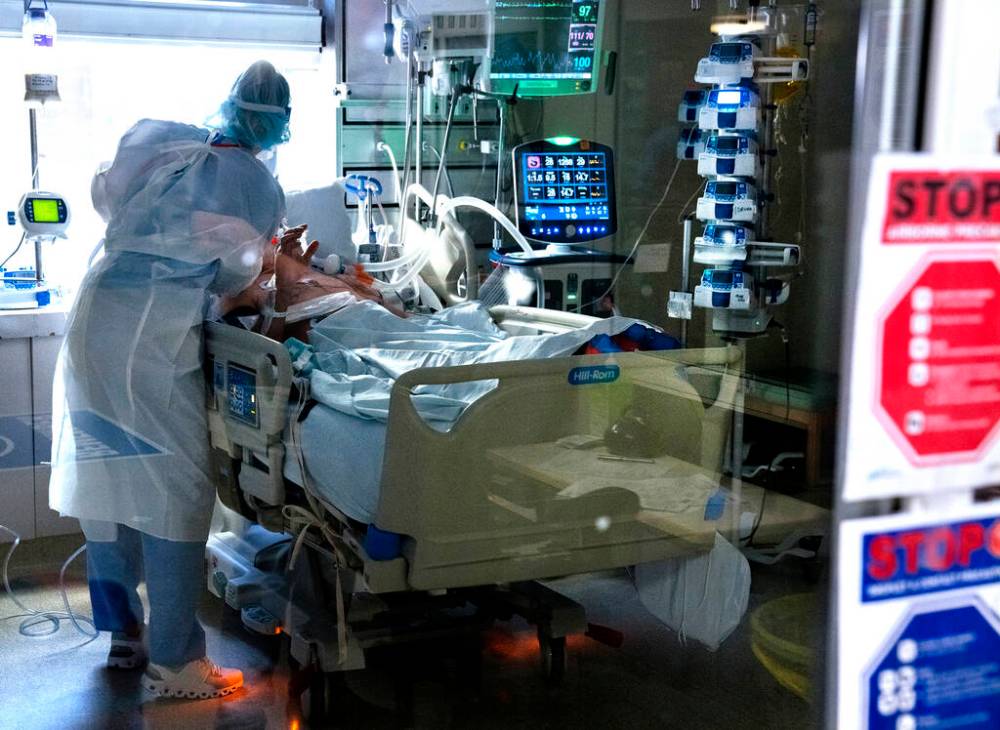Hard data shows ER waits up, more people get fed up and leave
Advertisement
Read this article for free:
or
Already have an account? Log in here »
To continue reading, please subscribe:
Monthly Digital Subscription
$0 for the first 4 weeks*
- Enjoy unlimited reading on winnipegfreepress.com
- Read the E-Edition, our digital replica newspaper
- Access News Break, our award-winning app
- Play interactive puzzles
*No charge for 4 weeks then price increases to the regular rate of $19.00 plus GST every four weeks. Offer available to new and qualified returning subscribers only. Cancel any time.
Monthly Digital Subscription
$4.75/week*
- Enjoy unlimited reading on winnipegfreepress.com
- Read the E-Edition, our digital replica newspaper
- Access News Break, our award-winning app
- Play interactive puzzles
*Billed as $19 plus GST every four weeks. Cancel any time.
To continue reading, please subscribe:
Add Free Press access to your Brandon Sun subscription for only an additional
$1 for the first 4 weeks*
*Your next subscription payment will increase by $1.00 and you will be charged $16.99 plus GST for four weeks. After four weeks, your payment will increase to $23.99 plus GST every four weeks.
Read unlimited articles for free today:
or
Already have an account? Log in here »
Hey there, time traveller!
This article was published 28/04/2022 (1318 days ago), so information in it may no longer be current.
New data confirms anecdotal reports from hospital staff about worsening emergency department wait times in Winnipeg, and an increase in patients leaving without getting the care they need.
In March, the overall median wait time to see a doctor, at all Winnipeg Regional Health Authority and Shared Health sites, grew by 37 minutes from the previous month, to 2.8 hours, Shared Health data shows.
The longest waits increased to an overall average of 7.58 hours across all sites.

“We are concerned with the increase in patients who are leaving without being seen and want to remind Manitobans that our teams continue to provide high-quality care,” Health Sciences Centre’s chief operating officer Dr. Shawn Young said in a news release.
“While lower-acuity patients may experience a longer wait while we attend to sicker patients immediately, all patients are assessed and triaged upon arrival and care will be provided,” Young said.
The longer wait times have resulted in a corresponding increase in the number of patients who leave without being seen, Shared Health reported Thursday, with an overall average last month of 13.6 per cent across all Winnipeg sites.
A “concerning” number of higher-acuity patients — seven per cent — left without being seen. That prompted regular checks from physicians and clinical staff at multiple sites in emergency waiting rooms to ensure patients didn’t have escalating health concerns, Shared Health said.
“This is not good news for Manitobans,” NDP health critic and former nurse Uzoma Asagwara said about the emergency room wait-time data.
“It reflects, unfortunately, this government’s ongoing poor decision-making around health care.”
Health Minister Audrey Gordon didn’t comment Thursday, either in person in in a news release.
Long ER wait times have varied throughout the pandemic. In November, the wait time was 5.2 hours, an increase of 27 per cent over the November 2020 wait time of 4.1 hours, the province had reported.
The longer waits last month are owing to increased staff sick calls and worsening delays in accessing inpatient beds that are caused by several factors, including increased patient volumes and severe weather, Shared Health said.
The current wait time challenges did not develop overnight. They have worsened by hospital ERs having to respond to COVID-19 at a time when staff has called in sick at levels not seen in a decade, Young said.
“High volumes of patients across our inpatient units are impacting patient flow, blocking treatment spaces in the emergency departments and urgent care centres until those patients can be admitted to a unit,” the doctor said.
Despite the challenges, wait times for the sickest and most injured patients continue to be minimal, WRHA chief executive officer Mike Nader said in the release.
Patients with possibly life-threatening illness or trauma are prioritized to ensure they receive the care they need “without delay,” Nader said.
The delay has been caused by problems with patient flow, he said, adding the health authority is trying to fix it.
Changes to ambulance transport protocols are shifting appropriate lower-acuity patient arrivals to urgent care centres rather than Winnipeg’s most acute emergency departments. That will result in the redirection of dozens of patients per day away from the city’s three biggest hospitals – the HSC, St. Boniface and Grace.
The HSC sped up PCR testing at adult emergency for patients who require admission. Early evidence indicates that is streamlining the process and allowing for quicker patient flow within the department, Shared Health said.
carol.sanders@freepress.mb.ca

Our newsroom depends on a growing audience of readers to power our journalism. If you are not a paid reader, please consider becoming a subscriber.
Our newsroom depends on its audience of readers to power our journalism. Thank you for your support.





